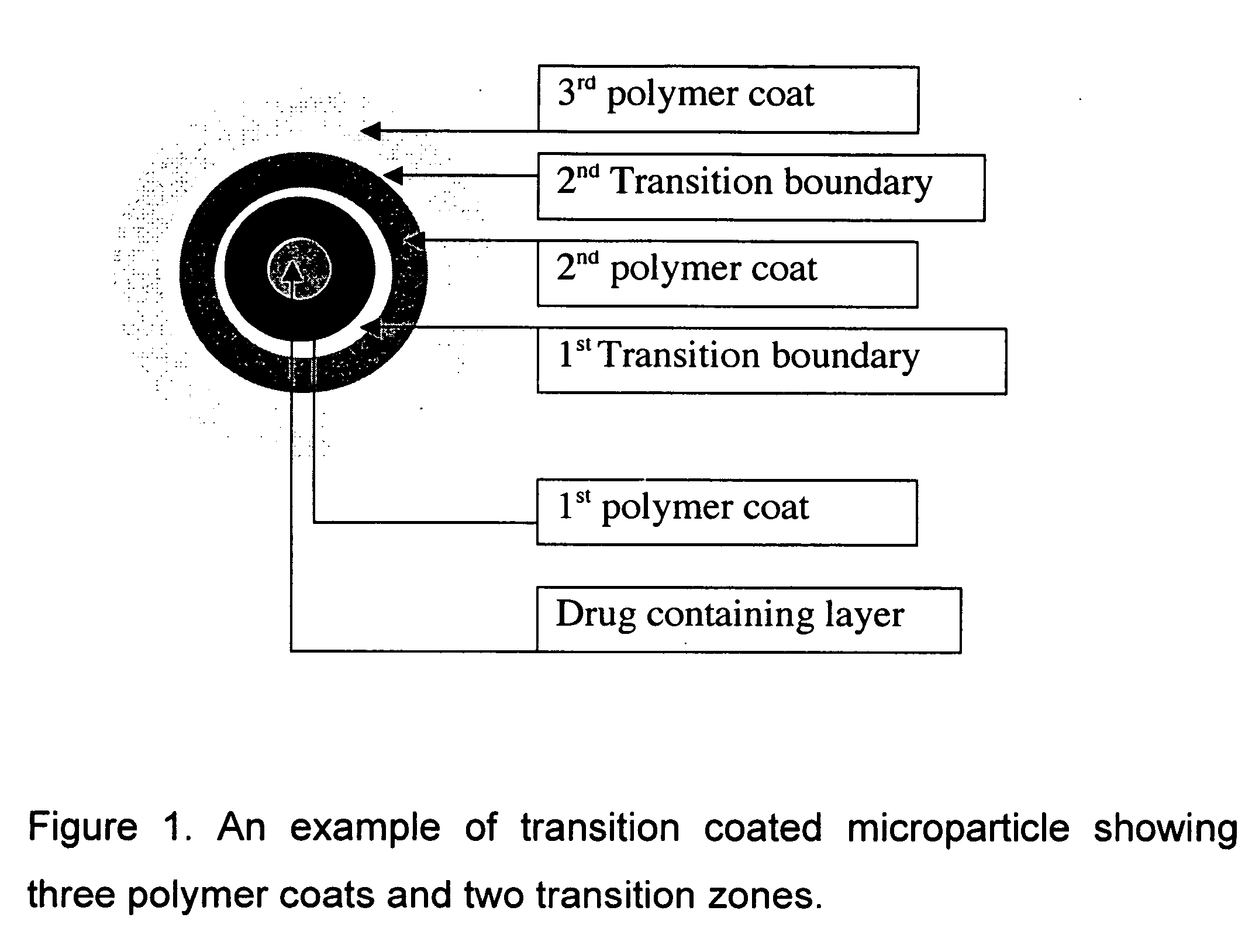Controlled release composition using transition coating, and method of preparing same
a technology of transition coating and release composition, which is applied in the direction of coatings, pill delivery, pretreatment surfaces, etc., can solve the problems of undetermined, inability to establish, and inability to adhere, so as to achieve cost-effective and efficient control of the input or drug release rate, the effect of easy control
- Summary
- Abstract
- Description
- Claims
- Application Information
AI Technical Summary
Benefits of technology
Problems solved by technology
Method used
Image
Examples
example 1
Controlled Release Venlafaxine HCl Tablets
[0036] This is a two step process. In the first step, immediate release tablets are manufactured by dry granulation process followed by direct compression into tablets. In step two, three coats consisting of one or more layers of Aquacoat 30ECD (ethylcellulose polymer), Kolicoat SR 30D (polyvinyl acetate) and Eudragit NE 30D (acrylic polymer) are applied one after the other such that there is a transition from one coat to another. Note that the film forming polymers are administered separately and not as an admixture.
[0037] (1) Manufacture of Tablet
Venlafaxineformulation (%)Venlafaxine HCI20Lactose59Microcrystalline20celluloseSilicone dioxide0.5Magnesium stearate0.5
[0038] The materials with exception of the magnesium stearate were charged into a planetary mixer and blended for 5 minutes. The homogeneous blend was charged into a V-Blender. Magnesium stearate was added and the content blended for about 5 minutes. The blended materials were...
example 2
Controlled Release Metoprolol Succinate Tablets
[0041] This is a two step process. In the first step, immediate release tablets are manufactured by dry granulation process followed by direct compression into tablets. In step two, three coats consisting of one or more layers of Aquacoat 30ECD (ethylcellulose polymer), Kolicoat SR 30D (polyvinyl acetate) and Eudragit NE 30D (methacrylate copolymer) are applied one after the other such that there is a transition from one coat to another.
[0042] (1) Manufacture of Tablet
Metoprololformulation (%)Metoprolol succinate30Lactose49Microcrystalline20celluloseSilicone dioxide0.5Magnesium stearate0.5
[0043] The materials with exception of the magnesium stearate were charged into a planetary mixer and blended for 5 minutes. The homogeneous blend was charged into a V-Blender. Magnesium stearate was added and the content blended for about 5 minutes. The blended materials were compressed into tablets in a rotary press.
[0044] (2) Coating of Tablets...
example 3
Chrontherapeutic Paroxetine HCl Tablets
[0046] This is as in example 2 except for the following; paroxetine is substituted for metoprolol, hydroxypropylmethyl cellulose 5% by weight of polymer is added to the transition coat. The tablets are cured by drying in a tray dryer oven for 2 hours at 60° C. To obtain chronotherapeutic release a final coat of methacrylic acid copolymer type A (Eudragit L) is applied to 4% weight gain.
PUM
 Login to View More
Login to View More Abstract
Description
Claims
Application Information
 Login to View More
Login to View More - R&D
- Intellectual Property
- Life Sciences
- Materials
- Tech Scout
- Unparalleled Data Quality
- Higher Quality Content
- 60% Fewer Hallucinations
Browse by: Latest US Patents, China's latest patents, Technical Efficacy Thesaurus, Application Domain, Technology Topic, Popular Technical Reports.
© 2025 PatSnap. All rights reserved.Legal|Privacy policy|Modern Slavery Act Transparency Statement|Sitemap|About US| Contact US: help@patsnap.com


